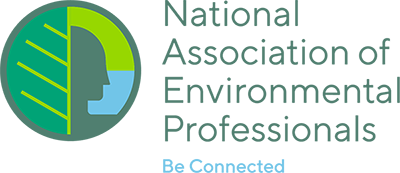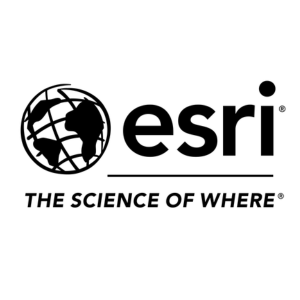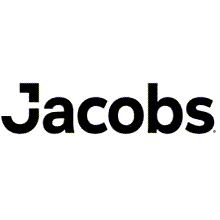- About NAEP
- Membership
- NAEP Chapters
- Working Groups
- Events and Programs
- Awards/Scholarships
- Resources
|
The 2012 Award Winners are listed below. Please take a few minutes to read about their projects. President’s Award - Caltrans – District 11, SANDAG, and San Diego MTS propose to construct bus rapid transit (BRT) stations and dedicated BRT lanes in the Mid City community of San Diego in order to facilitate efficient transfers with other local routes and enhance existing bus routes. Station design will be consistent with the existing architectural design elements and current character found within the project corridor. It is anticipated that the new transit service will transform the Mid-City community from an economically-isolated area to a highly-connected hub, with high-speed transit to downtown and other employment centers through Smart Growth philosophies. SANDAG and Caltrans initiated a community-based planning process with local stakeholders to determine the most effective location and design of the facility, to discuss associated key opportunities and constraints as well as the progress and design of the final alternatives. The project’s environmental public review process included a multi-media and multi-language format that provided video simulations and poster displays for all three build alternatives and translators in three foreign languages (Spanish, Somali, and Vietnamese). This project represents the constructive collaboration, active participation, and open communication with multiple agencies, stakeholders, and the community in order to produce the most effective transportation decision making.
Best Available Environmental Technology Award – The Columbia River Crossing project (CRC) is large and complex, with the potential for multiple years of in-water construction. The project spans the Columbia River, a migratory corridor for 13 ESA-listed fish species. Over 1,000 temporary steel piles will be required to install permanent drilled shafts and build the superstructures of the new bridges. Impact driver “proofing” of these temporary piles could result in injury or death of fish, and was considered the major impact to listed fish from the project. To determine potential hydroacoustic exposure, the CRC team developed a hydroacoustics analysis method that accounted for moving and stationary fish in the project area by week of year and assumed construction techniques. Daily, weekly, annual, and total project exposure factors were calculated and applied as structured decrements against estimates of fish populations to assess potential weekly, annual and project effects. The CRC team modeled fish abundance by species, life-stage and statistical week for input to the exposure model. Draft exposure models were prepared to provide estimates of effects during preliminary design phases, through which construction techniques and the model were refined. The proposed design is now expected to impact little of any given run. By working closely with regulatory agencies, the CRC team was able to demonstrate that impacts were so low on an annual and cumulative basis that an in-water work window extension of approximately 12 weeks was granted, allowing construction to be completed several years earlier than it could have otherwise.
Conservation Programs Award – The Black Mountains in northwestern Arizona are home to the world’s largest herd of Desert Bighorn Sheep (DBS). The upgrade of US 93 from a two-lane to a four-lane divided highway would create a barrier to DBS movement and fragment the sheep population, leading to survival consequences as traffic volumes continue to rise and DBS attempt to cross the highway. Three wildlife overpasses were constructed to safely and effectively convey DBS and other wildlife across the highway.
Education Excellence Award– For this project Farmland Foods, Salt Lake City, teamed up with the local Catholic Community Services and set up training course that taught basic life skills to refugees that had recently come to the United States. One area taught focused on the importance of recycling, preserving our natural resources, and protecting the environment. This was in hopes of giving the refugees knowledge to take back to their families and communities. Many of them were not aware of what recycling was or why it was important. Farmland Foods taught 3 groups with approximately 8 refugees in each class.
Environmental Stewardship Award – NTMWD addressed this problem by developing an environmentally friendly, fast-track project that would yield the raw water supply needed to meet the increased water demand — the East Fork Raw Water Supply Project. The East Fork Raw Water Supply Project represents the largest water reuse project in the United States utilizing a constructed wetland to reclaim water for the purpose of augmenting a surface water supply source. Functionally, the project works as follows: NTMWD diverts treated effluent (return flows) from the East Fork of the Trinity River that have been contributed by NTMWD- or customer-owned wastewater treatment facilities into a 2,000-acre constructed wetland for removal of sediments and nutrients from the water. The wetland-treated water is then conveyed 43.5 miles to Lavon Lake for subsequent treatment and use by NTMWD customers. The East Fork Raw Water Supply Project is capable of providing over 102,000 acre-feet of water per year, enough water to serve 500,000 people. This is comparable to the yield of a new reservoir, but was completed at a cost of less than 25% of developing a new reservoir and in about 20% of the time. As such, the East Fork Raw Water Supply Project is a signature solution of innovation.
Environmental Management Award– This project combines the need for placement of dredged material associated with the Cove Point Pier Reinforcement Project (PRP) with the protection of Cove Point Marsh, a unique freshwater ecosystem along the western shore of the Chesapeake Bay. The beach separating the Marsh from the Bay was breached during a 4-day northeaster in 2006. In order to provide a placement site for the PRP dredged material, a placement site consisting of a salt marsh and armoring material was designed to seal the breach and repair the beach and dune system lost by the breach. The design also expanded to protect and enhance habitat for the federally listed northeastern beach tiger beetle, which was historically found on the beach. The Cove Point marsh protection placement project has three components: (1) repair of the 2006 breach that converted the former freshwater Cove Point marsh into a brackish water system, (2) a dredged material placement site, which includes a continuous containment structure, placement of dredged material, and creation of tidal marsh, and (3) a segmented breakwater and beach nourishment to protect the beach south of the placement site from shoreline erosion and to enhance habitat for the northeastern beach tiger beetle.
NEPA Excellence Award – The I-70 Mountain Corridor is a 144-mile-long interstate that stretches from the Denver metropolitan area to Glenwood Springs, Colorado. The corridor experiences many hours of congestion, particularly on weekends, as travelers access ski areas, hiking areas, and other recreational destinations in the Rocky Mountains. CDOT conducted a Programmatic Environmental Impact Statement (PEIS) to evaluate alternatives for a reconstruction project to add capacity and improve mobility along the corridor. The prior Tier 1 Programmatic Draft EIS (DEIS) had identified a Preferred Alternative that did not have the support of the majority of corridor stakeholders. Beginning in 2007, CDOT initiated a collaborate decision making process to identify a new Preferred Alternative and to prepare a revised Programmatic DEIS, FEIS and ROD that includes capacity, travel mode, and general location for the reconstruction and widening of I-70, including an Advanced Guideway System. The process used to complete the I-70 Mountain Corridor PEIS is a major achievement involving such national organizations as the National Trust for Historic Preservation, the Federal Highway Administration, the U.S. Forest Service, the U.S. EPA, U.S. Army Corps of Engineers, and numerous state and local agencies and groups. It used very innovative approaches to collaborative decision making, reader friendly NEPA documentation, streamlined agency and consultant teams, environmental stewardship, and an unprecedented (on major highway projects) adaptive management approach to implementing a Preferred Alternative. The first Tier 2 project to be developed for this corridor is the Twin Tunnels EA project, which is currently underway.
Planning Integration Award- Pennsylvania Program Development and Project Delivery Process was redefined through and integrated partnership with stakeholders across the state. The new process emphasizes the identification of issues early in the planning stages in order to influence project prioritization; have a better understanding of project scopes, schedules, and budgets; and improve predictability and efficiency in programming and project delivery. Implementation included updates to PennDOT policy, procedure, and guidance documents and the introduction of an automated screening tool which documents known land use, economic development, environmental, and engineering issues associated with proposed transportation improvements.
Public Involvement Award- This restoration and enhancement project created 280 acres of saltmarsh and upland transition habitat in South San Diego Bay. To accomplish this restoration project, tidal channels were created, uplands were excavated to elevations which would support salt marsh habitat, and a shorebird nesting beach was built. Volunteers planted salt marsh plants to provide habitat for the endangered Light-footed clapper rail. Overall, 768 volunteers, an estimated 1500 hours of volunteer time was utilized to remove over 46 tons of invasive plants and debris and plant thousands of salt marsh plants. We knew we had created something great, when in the middle of construction, 20 endangered birds nested on the newly created beach. |



